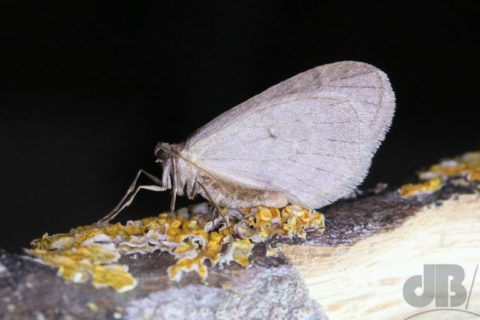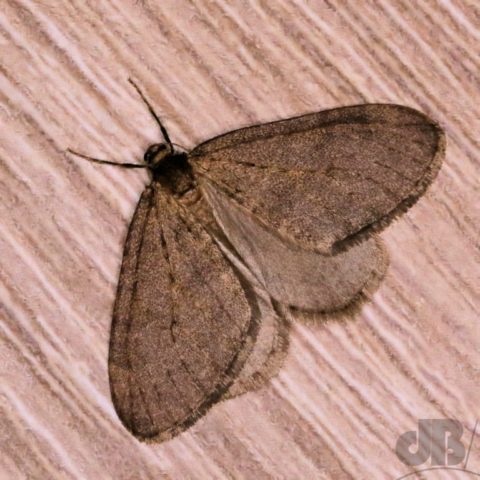By Christmas Eve 2018, it will be five months since I started trapping, identifying, photographing, and releasing (unharmed) moths using an actinic light trap. At the last count, I had ticked 129 moths. As the autumn drew in and winter arrived, the number of new species plummeted although other moth-ers talked of Mervs, November moths, December moths, Winter moths, Mottled Umbers, migrants, and more.
I’d seen none of those species until a Winter Moth (Operophtera brumata) finally turned up on the vanes of the trap and was sitting there when I got back from C5 the band rehearsals last night. I got a quick record shot on my phone and then persuaded him (it’s definitely a male; the females have no wings) to sit on my trusty lichen-encrusted stick for a late-night photo shoot. The inimitable Leonard C on the Moths UK Flying Tonight Facebook group corroborated my identification.

This morning, after a restful night’s sleep, O. brumata was ready for a couple more snaps prior to release back into the wild. As the name suggests, this species flies and breeds during the winter, taking flight from late autumn and on the wing until January-February. It is a relatively common species and its larvae can sometimes be found in numbers so large that they will completely defoliate small trees and so the species is considered a pest, according to UK Moths.

You can view all of the decent shots I’ve got of Lepidoptera on my Imaging Storm website where there’s also a full listing of species common names and scientific binomials.